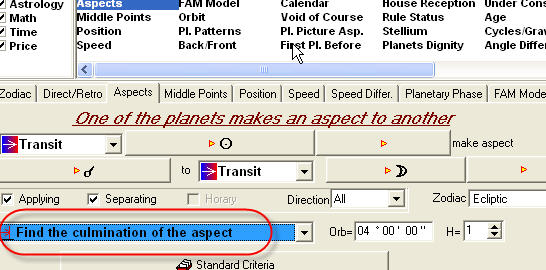
Lesson 5
ULE - Algebra of Events, Part I I
Now you are able to record different events and make their combinations. We can do it due to a unique feature that exists only in Timing Solution: Universal Language of Events (ULE). It allows to create rather complicated combinations of events very easily. However, there are some small things and nuances related to the usage of this Universal Language of Events. We discuss them in this Lesson.
Let us start with one practical example. I received a question by e-mail regarding Dow Jones Industrial index's behavior around the New Moons. The hypothesis to be tested was about analyzing not all New Moons - only those that occur while there is no aspect between the Sun and any other planet (except the Moon, of course).
How would you deal with such event? It is not a problem as you have Timing Solution. Create a series of events first. Start with the New Moon (which is the Moon conjuncting the Sun); watch for the culmination (no aspect in orb):

It will be L1 event.
Next step is to record the event when the Sun makes the aspect to other planets (except the Moon). (I forgot to mention that the question was specifically about conjunctions; however, you may consider other aspects as well.) Let use the orb = 10 degrees. Fill out "Aspects" tab this way:
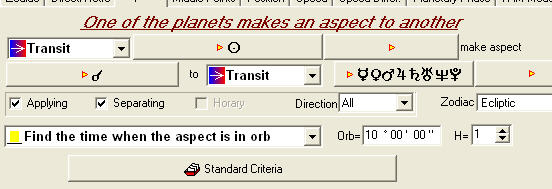
It will be L2 event.
Let calculate both these events:
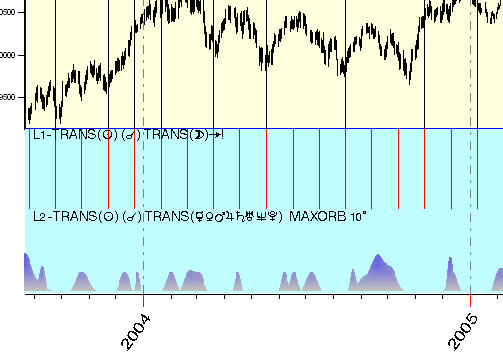
Here we can see red vertical lines that correspond to New Moons and blue zones in the bottom that represent periods when the Sun conjuncts other planets. However, this is not what we really need; as you remember, we would like to find the moments when there is no aspects to the Sun from the planets.
In this case, Not function helps. Type this formula in Model Editor:

Here L1- New Moon; L2- the Sun aspects other planets. Thus, NOT(L2) corresponds to the event "the Sun does not make aspects to other planets". This final formula describes exactly what we are looking for.
Now we are ready to do the Efficiency Test for this event. Here it is:
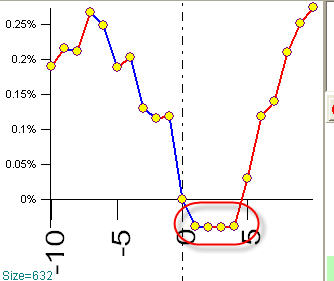
It looks like four days after this combined event Dow Jones index stays flat (I analyzed DJI 1885-2006). There is no energy for further movement, though in five days the bulls come back to the stock market.
Another example regards to stellium. The stellium means several planets in the same Zodiac sign or house. There was an Internet discussion of what may happen this November (2006), when many planets will be in Scorpio.
We can deal with this problem in two ways. The first one is pretty obvious: find all moments (or periods) when the stellium in Scorpio takes place and look what has happened then. Create this simple event (any planet in Scorpio, either being there or ingressing it):
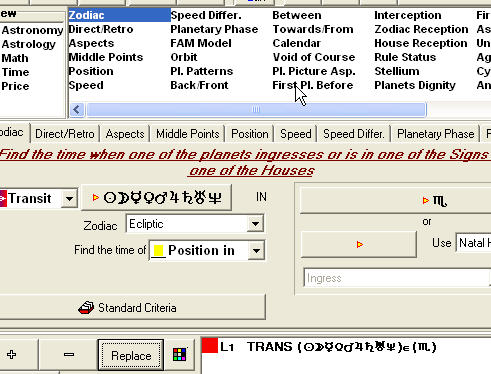
Calculate it:
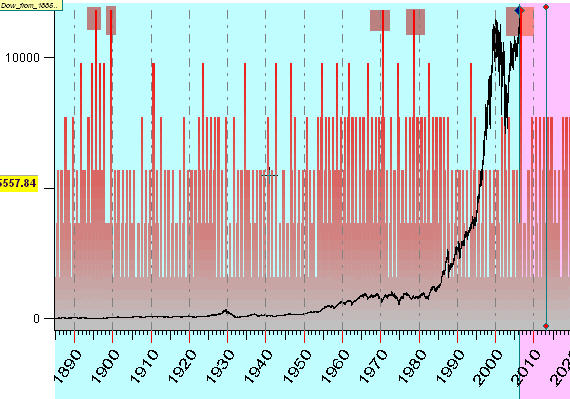
This red diagram shows how many planets have been in Scorpio in regards to available DJI data. The program automatically adjusts the height of vertical lines: the higher the line, the more planets are in Scorpio at the same time. It gives you ability to choose the desired number of planets for the stellium. I have found four moments of DJI history when six planets were located in Scorpio.
It has happened in the year 1978, and the DJI has moved this way:
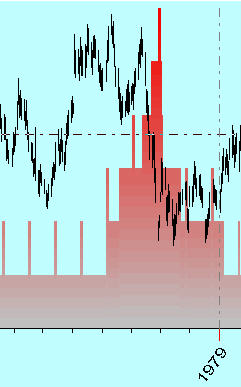
1970:
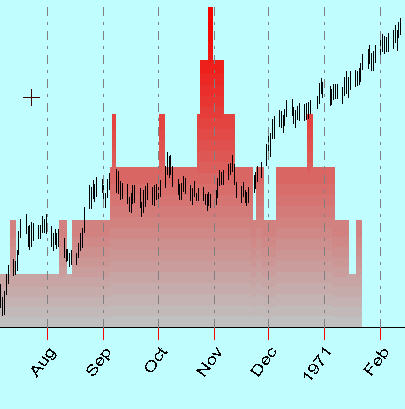
1889:
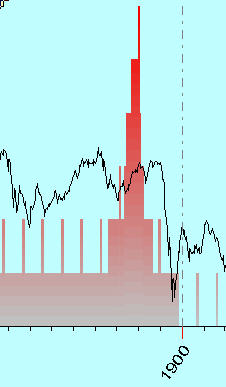
and 1885:
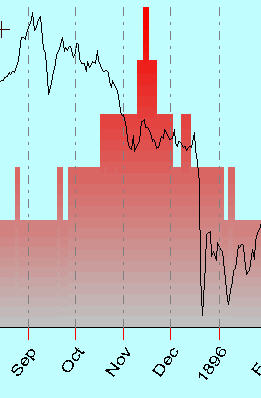
It will be in 2006.
What can we say? From one side, among these 4 occurrences in the past history, three times there was a drop (in 1978, 1889 and 1885). However, I would not make any comments as surely this information is not enough to make any conclusions.
There is more advanced feature in the program devoted to stelliums. It provides more flexible way of dealing with the stellium.
Choose "Stellium" tab. You will get this
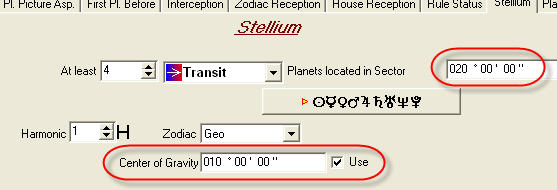
Here we define the event when at least 4 planets are forming the stellium. The width of this stellium is 20 degrees (this is my choice).
Stellium Center option allows to locate this stellium at some specific area of Zodiac. In our example, we set the stellium center as equal to 10 degrees, which means 10 degrees of Aries. Thus, this event reflects the moments when at least four planets were located between 0 Aries and 20 Aries.
If we do not use the "Stellium Center", it means that these four (or more) planets are located in any place of Zodiac, within 20-degree area.
There are so many possibilities to record different events and their combinations. I recommend you to go through all tabs of Model Editor and play with their options. You will get used to its logic very soon, and you will be able to evaluate different astro related statements very quickly. The following are some last notes related to this topic.
To calculate the moments of planetary rising/culmination/setting/anticulmination, set these options:
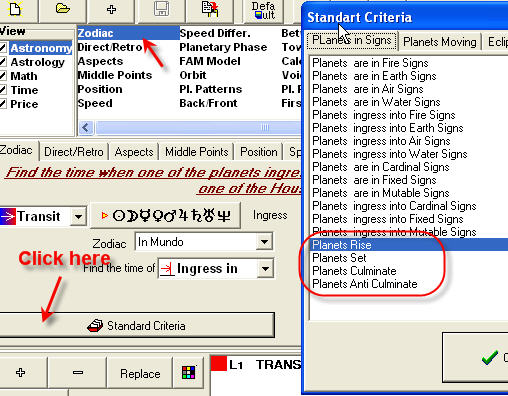
You can find very seldom phenomena, such as Grand sextile:
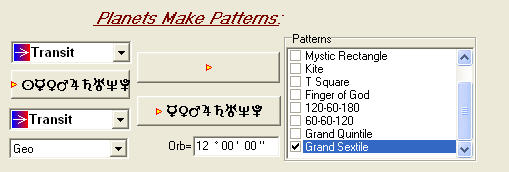
By the way, for the whole DJI history, it had occurred only once - in 1937:
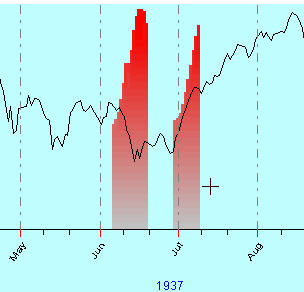
At the end, I would like to remind you again that it is possible to record many different events in the program and combine them in different ways, creating more complicated events and models. However, this system is open - we constantly add new events here as our knowledge about stock market behavior and factors that may affect it is growing all the time.